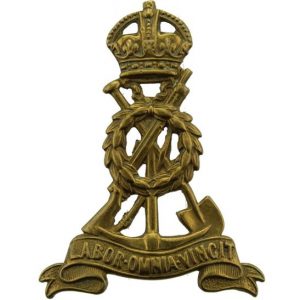
Personal Details
Born: 19 September 1893 in Wem, Shropshire and baptised on 8 October the same year in the Wem Methodist Chapel.
Family: He was the eldest of six children born to Joseph Smith, a carter, and his wife Leah. He married Elizabeth Davies in 1918 in Wigan, Lancashire; children cannot be confirmed for the marriage.
Residence: In 1901 Frank was living with his grandparents in Prees Green, Shropshire. In 1911 he was living with his parents and siblings at 12 South Street, Widnes, Lancashire, which was his address to which he was discharged in 1918. In 1939 he was living at 28 Heather Grove, Wigan.
Employment: In 1911 he was a farm hand; when he enlisted in 1914 and in 1939 he was a labourer.
Died: In 1968 in Wigan, aged 74.
Military Details
Regiment: Labour Corps (previously King’s Liverpool Regiment and South Lancashire Regiment).
Rank: Private
Service Number: 39412 (previously 65125 and 18687).
Date of Enlistment: 19 April 1915
Date of Discharge: 8 March 1918
Reason for Discharge: Sickness
Other Information: He suffered a gunshot wound to the head in 1917 which led to him being hospitalised and subsequently discharged from the army. He was court martialled in 1915 for desertion and was detained for 112 days with 28 days remission.
Frank was awarded the Campaign Medals (British War and Victory medals) and Silver War Badge (number 337962)

The British War Medal (also known as 'Squeak') was a silver or bronze medal awarded to officers and men of the British and Imperial Forces who either entered a theatre of war or entered service overseas between 5th August 1914 and 11th November 1918 inclusive. This was later extended to services in Russia, Siberia and some other areas in 1919 and 1920. Approximately 6.5 million British War Medals were issued. Approximately 6.4 million of these were the silver versions of this medal. Around 110,000 of a bronze version were issued mainly to Chinese, Maltese and Indian Labour Corps. The front (obv or obverse) of the medal depicts the head of George V. The recipient's service number, rank, name and unit was impressed on the rim.
The Allied Victory Medal (also known as 'Wilfred') was issued by each of the allies. It was decided that each of the allies should each issue their own bronze victory medal with a similar design, similar equivalent wording and identical ribbon. The British medal was designed by W. McMillan. The front depicts a winged classical figure representing victory. Approximately 5.7 million victory medals were issued. Interestingly, eligibility for this medal was more restrictive and not everyone who received the British War Medal ('Squeak') also received the Victory Medal ('Wilfred'). However, in general, all recipients of 'Wilfred' also received 'Squeak' and all recipients of The 1914 Star or The 1914/1915 Star (also known as 'Pip') also received both 'Squeak' and 'Wilfred'. The recipient's service number, rank, name and unit was impressed on the rim.

The Silver War Badge was issued in the United Kingdom and the British Empire to service personnel who had been honourably discharged due to wounds or sickness from military service in World War I. The badge, sometimes known as the "Discharge Badge", the "Wound Badge" or "Services Rendered Badge", was first issued in September 1916, along with an official certificate of entitlement.
